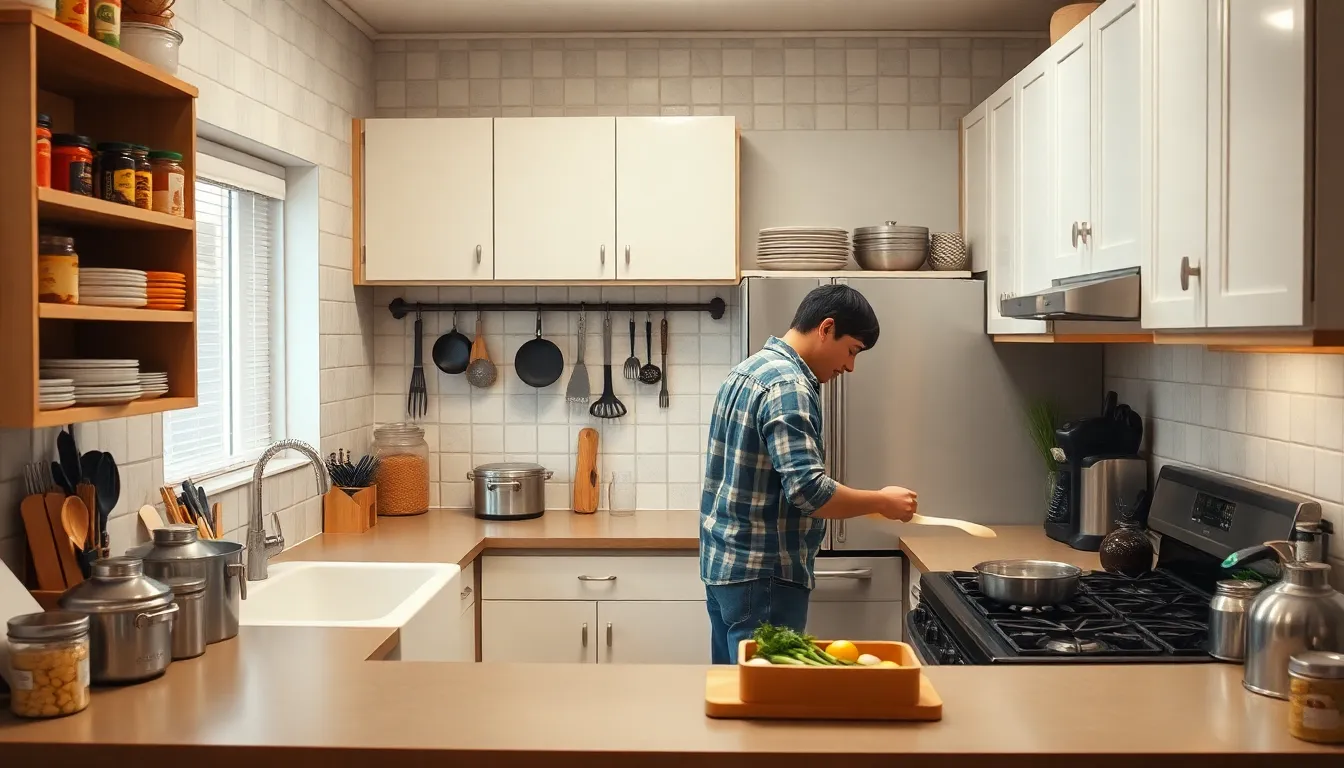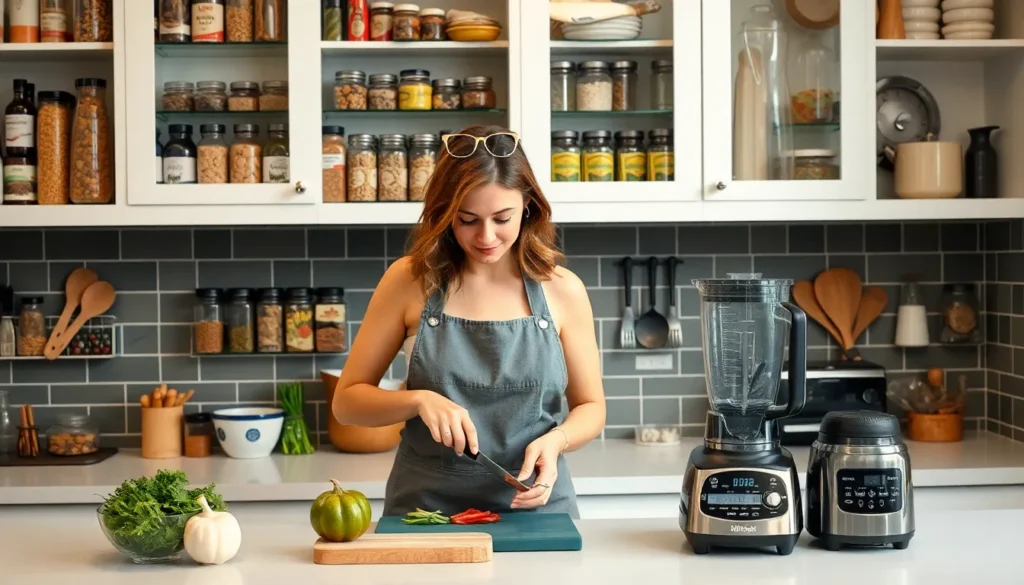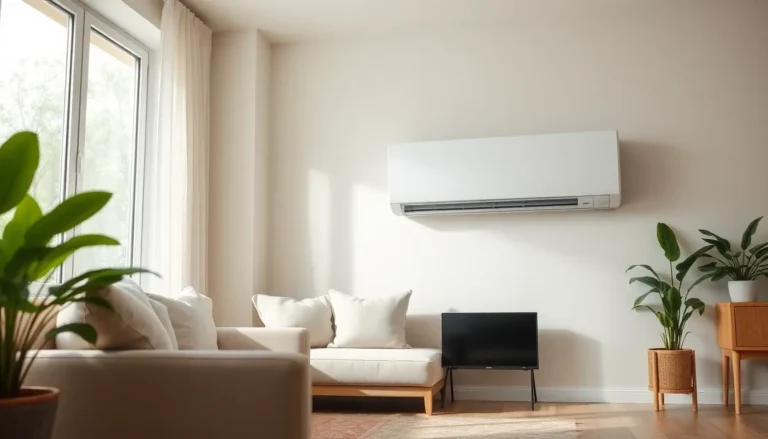Table of Contents
ToggleIn the bustling world of culinary creativity, kitchen efficiency is the unsung hero. Imagine whipping up a gourmet meal without the chaos of searching for a spatula or untangling a web of cords. It’s not just about saving time; it’s about transforming that chaotic cooking experience into a smooth, enjoyable process.
Understanding Kitchen Efficiency
Kitchen efficiency refers to the optimized setup and processes involved in food preparation and cooking. A logical arrangement of tools, appliances, and ingredients minimizes time spent searching for items, significantly enhancing productivity. Organizing cabinets and drawers in a systematic manner fosters quick access to essentials, eliminating wasted movements.
Effective layout designs play a crucial role in kitchen efficiency. The work triangle—comprising the sink, stove, and refrigerator—ensures that these primary stations are easily reachable, promoting seamless workflow. Implementing this design principle can cut down on unnecessary travel across the kitchen, allowing for smoother transitions between tasks.
Additionally, utilizing vertical space maximizes storage. Shelves, hooks, and magnetic strips create opportunities for displaying frequently used items, keeping them within arm’s reach. This approach reduces clutter on countertops, leading to a more presentable and functional environment.
Time management contributes to overall kitchen efficiency. Preparing ingredients beforehand—also known as mise en place—enables cooks to focus on execution rather than preparation during cooking. Setting timers for various stages in meal prep also ensures attention remains focused and tasks remain on schedule.
Regular maintenance of kitchen tools further amplifies efficiency. Cleaning and sharpening knives, descaling appliances, and organizing pantry items helps avoid interruptions during cooking sessions. A well-maintained kitchen stays efficient for longer periods, enhancing the cooking experience.
Incorporating technology can streamline many processes. Smart appliances offer features like remote operation, custom cooking presets, and automatic monitoring. Utilizing these innovations allows cooks to manage their kitchen better, fostering a more productive culinary space.
Key Components of Kitchen Efficiency

Kitchen efficiency relies on a few critical components that streamline cooking processes. Space optimization and workflow management play vital roles in creating an effective kitchen environment.
Space Optimization
Maximizing available space increases storage capacity. Utilizing vertical space can organize frequently used tools and ingredients, allowing for easy access. Wall-mounted shelves and hanging racks keep counters clear, eliminating clutter. Drawer dividers help categorize utensils, enhancing retrieval speed. Choosing multi-functional appliances further saves space while maintaining functionality.
Workflow Management
Establishing an efficient workflow enhances productivity in the kitchen. The work triangle configuration places the sink, stove, and refrigerator in close proximity. This design minimizes movement during meal prep. Preparing ingredients in advance, known as mise en place, helps keep tasks organized and ensures everything is ready. Implementing timers allows for better task management, preventing delays. Regularly cleaning surfaces and tools prevents distractions and maintains focus during cooking sessions.
Tools and Gadgets to Improve Kitchen Efficiency
Utilizing the right tools can significantly boost kitchen efficiency, contributing to a smoother cooking experience.
Essential Kitchen Appliances
High-quality appliances enhance efficiency in the kitchen. Blenders enable quick smoothie preparation, while food processors streamline chopping and shredding tasks. Multi-cookers provide versatility, allowing users to steam, sauté, and slow-cook meals with minimal effort. Dishwashers take away the hassle of cleaning up after cooking, saving valuable time. Induction cooktops heat faster than traditional stovetops, increasing cooking speed. These appliances, when used effectively, transform daily meal preparation into an efficient process.
Organizational Tools
Organizational tools play a vital role in maintaining kitchen efficiency. Drawer dividers simplify utensil organization, allowing for quick access during cooking. Stackable storage containers maximize space by utilizing vertical height, keeping ingredients fresh and visible. Magnetic spice racks provide easy visibility and accessibility, reducing search time for spices. Clear bins help categorize pantry items, promoting an organized and inviting kitchen. Installing open shelving allows for casual display and easy access, making cooking a more enjoyable experience.
Strategies for Enhancing Kitchen Efficiency
Enhancing kitchen efficiency requires effective strategies that focus on planning and cooking techniques. Implementing these approaches helps streamline daily culinary activities.
Meal Planning Techniques
Meal planning serves as a critical strategy in improving kitchen efficiency. It involves organizing menus for the week or month, allowing for precise grocery shopping. By determining meal themes such as “Meatless Mondays” or “Taco Tuesdays,” individuals create structure. Preparing a detailed shopping list based on planned meals minimizes waste and ensures crucial ingredients are on hand. Allocating a few hours each week for meal prep, like chopping vegetables or marinating proteins, reduces time spent on cooking days. Utilizing digital tools or apps can simplify this process, enabling easier adjustments and tracking.
Time-Saving Cooking Methods
Time-saving cooking methods significantly enhance efficiency in the kitchen. Employing techniques like batch cooking allows for multiple meals to be prepared simultaneously. Utilizing a pressure cooker or slow cooker can cut cooking times significantly while delivering flavorful results. One-pan and sheet pan meals also simplify cleanup and cooking, making meal preparation less cumbersome. Investing in high-quality knives and equipment helps increase speed and accuracy while preparing ingredients. Incorporating these cooking methods keeps the kitchen organized and promotes a seamless workflow.
Embracing kitchen efficiency transforms the cooking experience into a seamless and enjoyable journey. By optimizing space and workflow, anyone can turn meal preparation into a quick and productive task. Simple strategies like effective organization and smart planning not only save time but also enhance creativity in the kitchen.
Investing in the right tools and maintaining a clutter-free environment plays a crucial role in this transformation. With these practices in place, home cooks can focus on what truly matters—creating delicious meals and enjoying the process. A well-organized kitchen isn’t just about efficiency; it’s about elevating the culinary experience to new heights.




